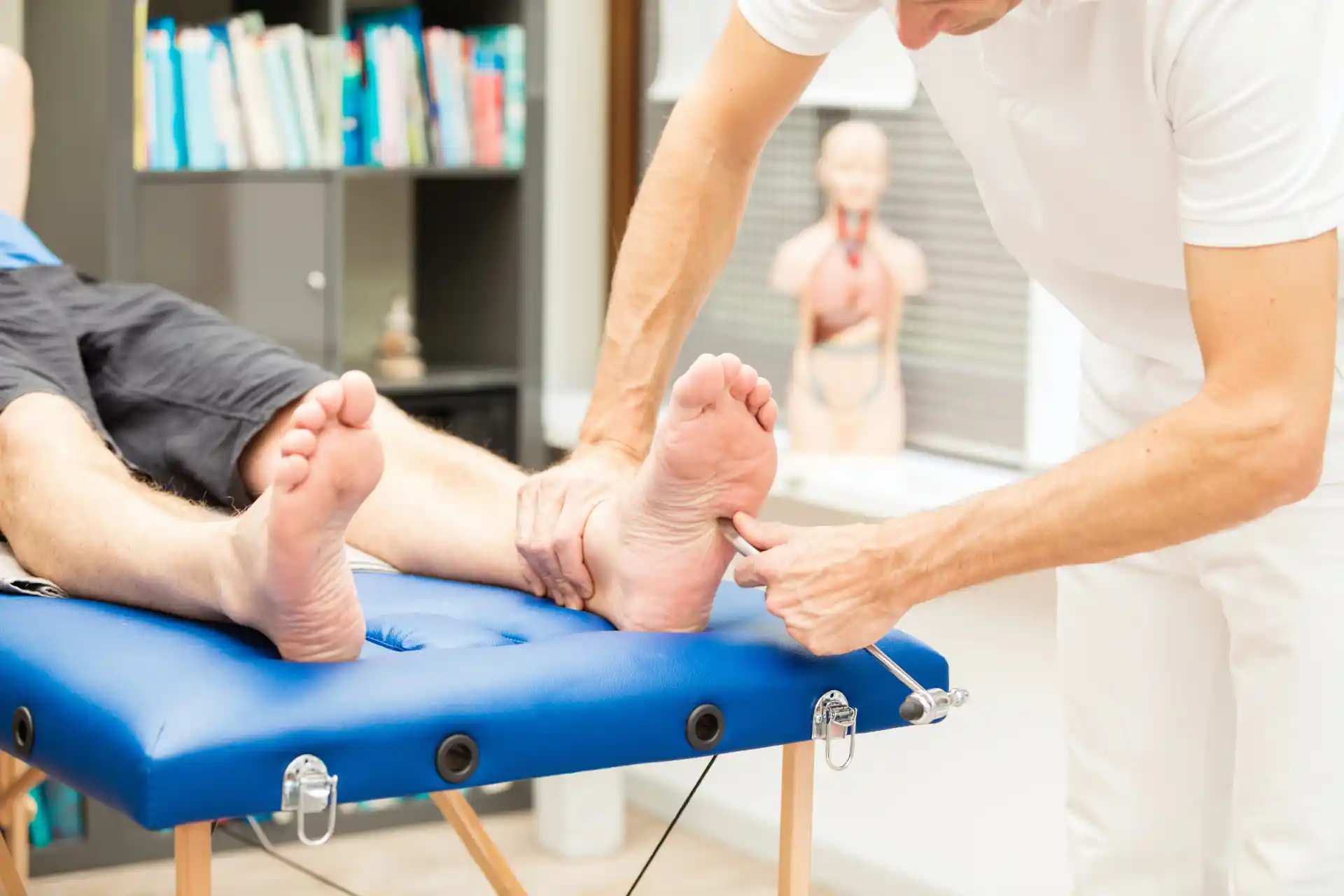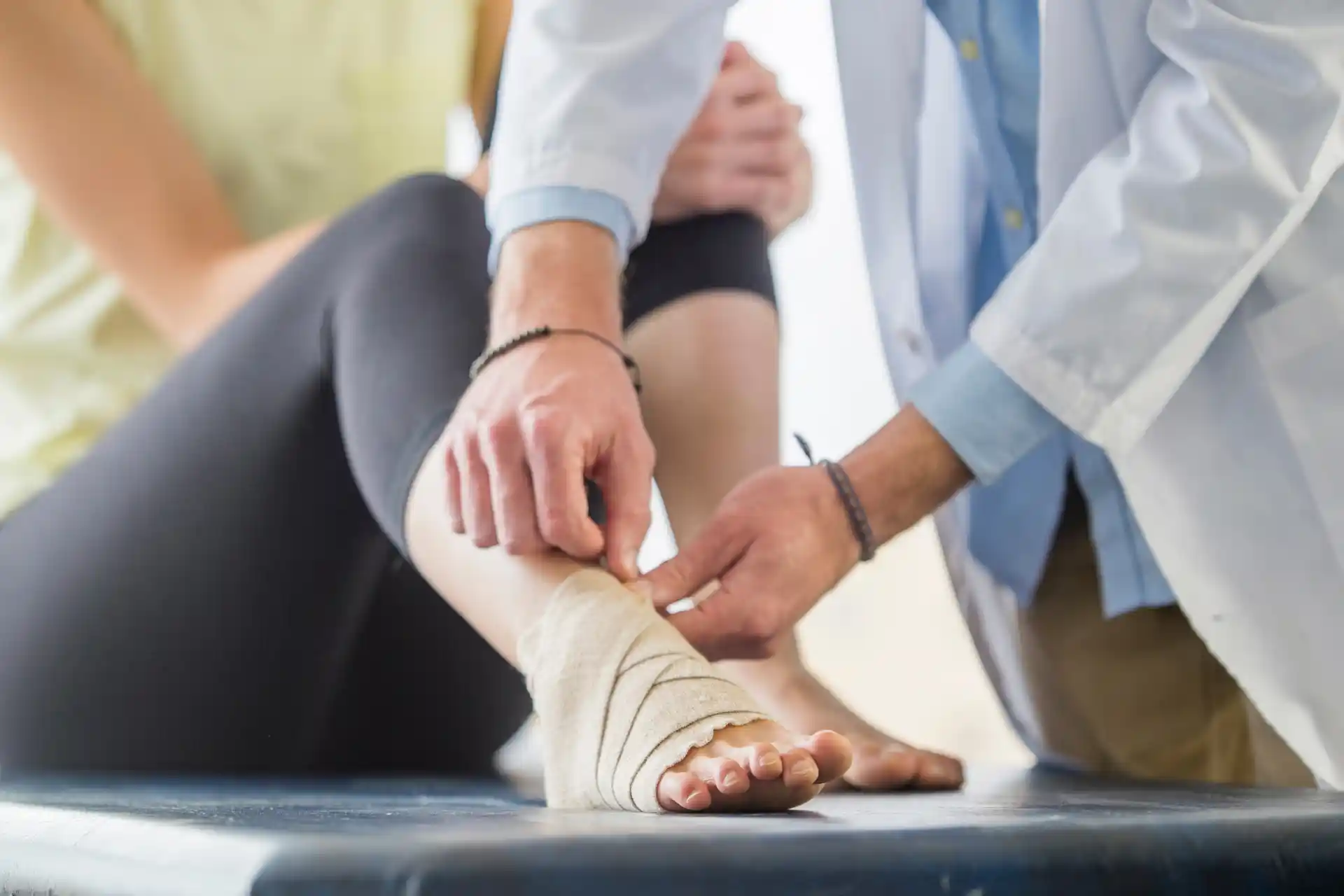Understanding Rotator Cuff Injuries
An Overview of the Rotator Cuff
The rotator cuff is a group of four muscles and their tendons that envelop the shoulder joint.
These muscles include the supraspinatus, infraspinatus, teres minor, and subscapularis.
Together, they play an essential role in stabilizing the shoulder and allowing a wide range of arm movements.
Common Causes of Rotator Cuff Injuries
Rotator cuff injuries can occur due to several factors, often varying between acute trauma and chronic overuse. Understanding these causes will help you take preventive measures and avoid future injuries. Common causes include:
- Repetitive Overhead Motions: Frequent activities that involve raising the arms above the head can strain the rotator cuff. This is common in sports like tennis, baseball, and swimming.
- Trauma: Direct blows or falls can cause sudden injury to the rotator cuff.
- Degeneration: As you age, the tendons can wear down naturally, increasing the risk of tears and tendinitis.
- Poor Posture: Improper posture can put undue stress on the shoulder muscles and tendons.
Symptoms and Diagnosis
Recognizing the symptoms of a rotator cuff injury is vital for early intervention and effective treatment.
Common symptoms include:
- Shoulder Pain: Persistent or acute pain in the shoulder, exacerbated by specific motions or at night
- Weakness: Difficulty lifting or rotating your arm.
- Limited Mobility: Reduced range of motion in the shoulder joint.
- Cracking Sensation: A crackling or popping feeling when moving the shoulder.
For accurate diagnosis, healthcare professionals use a variety of methods:
- Physical Examination: Initial assessments include tests like the Empty Can test and Hawkins-Kennedy test.
- Imaging: X-rays, MRIs, and ultrasound scans can reveal the extent of the injury.
Prompt recognition and diagnosis are essential for effective treatment and recovery.
Understanding the underlying causes and symptoms will help you seek appropriate medical attention and start your path to recovery.
For more on managing specific injuries, see our articles on rotator cuff tear, labral tear, and shoulder impingement.
Treating Rotator Cuff Injuries
When it comes to managing a rotator cuff injury, several treatment options can help you recover effectively.
These treatment options should be treated as a general guideline, always consult with a healthcare professional for personalized guidance on shoulder pain treatment that is right for you.
Rest and Ice Therapy
Rest is crucial for healing a rotator cuff injury. By giving your shoulder the necessary time to recuperate, you avoid further damage and inflammation.
Ice therapy is equally significant. Applying ice can reduce swelling and alleviate pain.
Place an ice pack on the affected area for 15-20 minutes several times a day.
Check out our article how to relieve rotator cuff pain at night for more insight.
Physical Therapy and Strengthening Exercises
Physical therapy plays a vital role in restoring function and mobility to a shoulder with a rotator cuff injury.
A therapist will guide you through specific exercises tailored to your condition, focusing on strengthening and stretching the affected muscles.
Some common rotator cuff exercises include:
- Pendulum Swings
- Internal and External Rotations
- Wall Climbing
Consistent exercise can help you regain strength and prevent future injuries.
Visit our page on physical therapy for shoulder pain to learn more about specific exercises and routines.
Medication and Injections
Nonsteroidal anti-inflammatory drugs (NSAIDs) can help manage the pain and inflammation associated with a rotator cuff injury.
Over-the-counter options include ibuprofen and naproxen.
If the pain persists, corticosteroid injections may be administered to provide more substantial relief.
For those dealing with persistent pain, consulting with a healthcare professional is recommended.
They may suggest further interventions like rotator cuff surgery or other specialized treatments.
Understanding and following these treatment options can significantly help in managing and recovering from a rotator cuff injury.
Explore more insights on how to differentiate different shoulder injuries such as frozen shoulder vs impingement.
Rehabilitating from a Rotator Cuff Injury
Rehabilitation plays a crucial role in recovering from a rotator cuff injury.
It involves careful care, attention to form and technique, and preventive measures to avoid future injuries.
Post-Recovery Care
Once you've completed the initial treatment for a rotator cuff injury, post-recovery care is essential to ensure you don’t experience further issues.
This phase involves gradual strengthening and mobility exercises tailored to help regain your shoulder's full function.
Working with a healthcare professional, such as a physical therapist, can provide a structured plan and reduce the risk of re-injury.
Importance of Proper Form and Technique
Using the correct form and technique during exercises and daily activities is vital in preventing further rotator cuff issues.
Improper movements can lead to increased strain, pain, and potentially a repeat of the injury.
- Warm-Up: Always start with a proper warm-up to prepare your muscles and joints.
- Controlled Movements: Perform exercises with controlled, steady motions to avoid unnecessary stress on your shoulder.
- Proper Posture: Maintain good posture during exercises and daily activities to distribute stress evenly across your shoulder muscles.
Improper form can lead to issues such as rotator cuff tear or shoulder impingement, so it's important to focus on correct techniques.
Preventing Future Injuries
Preventing further rotator cuff injuries involves incorporating specific strategies into your daily routine.
- Regular Exercises: Incorporate rotator cuff exercises and shoulder mobility exercises to maintain shoulder strength and flexibility.
- Avoid Overexertion: Refrain from activities that overextend or strain the shoulder.
- Use Supportive Gear: Consider using braces and supports during physical activities to provide extra stability.
Supportive Braces and Straps
Using supportive braces and straps can help stabilize and protect your shoulder during recovery. They offer additional support, reducing the strain on the healing muscles and tendons.
These aids are especially useful during the early stages of rehab or when transitioning to more intensive activities.
Always ensure that the brace or strap is applied correctly to maximize its benefits.
You may also consider consulting a physical therapist to get personalized recommendations on the best supportive gear for your specific condition.
Consulting with a Healthcare Professional
Regular consultations with a healthcare professional are critical during your recovery journey. A specialist can provide tailored advice, monitor progress, and make necessary adjustments to your rehabilitation plan.
If you encounter persistent rotator cuff pain or suspect complications, immediate medical consultation is advised.
Certain signs necessitate professional intervention, such as:
- Severe pain unrelieved by rest
- Swelling and significant bruising
- Difficulty moving the arm
Returning to activities post-injury requires diligence and the right measures to prevent re-injury and ensure long-term health.
Explore our related articles on post-surgical pain and supraspinatus surgery to get more insight on surgical options for rotator cuff issues.
Seek RELIEF®
RELIEF® is a science-backed, targeted approach that targets dysfunctional soft tissue, also known as fascia, that surrounds the affected shoulder joint and rotator cuff.
The treatment utilizes hydrodissection—a fluid-based technique that gently separates and releases adhered soft tissue layers and fascia, which may contribute to shoulder pain and joint instability.1,2,3,4,5,6,7
RELIEF® is a minimally invasive alternative to traditional treatments—and requires no steroids, medication, surgery, anesthesia, or post-procedure immobilization.
Contact us today to schedule a consultation and learn more about how RELIEF® may help with your shoulder pain and rotator cuff dysfunction.
.webp)



%20(1).webp)

.svg)